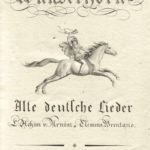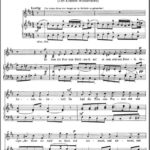
The settings of Des Knaben Wunderhorn by Gustav Mahler are orchestral songs and voice and piano settings of poems from Des Knaben Wunderhorn ('The Youth's Magic Horn') a collection of anonymous German folk poems assembled by Ludwig Achim von ...

One of the challenges with the ninth song in this collection, "Starke Einbildungskraft" (Strong imagination), concerns clarity of articulation. Sixteenth-note passages sound unclear with the piano part due to the imbalance of lower tones produced by both the piano and tuba. Changes have been notated in the tuba version ...

“Scheiden und Meiden” (Partings) explores the metric juxtaposition of two versus three used in “Ablösung im Sommer.” “Trumpetlike” is the first expression in the music as F major arpeggios rise from the tuba and piano. Despite the repeated ascending passages, the first dynamic is piano so the tubist should ...

